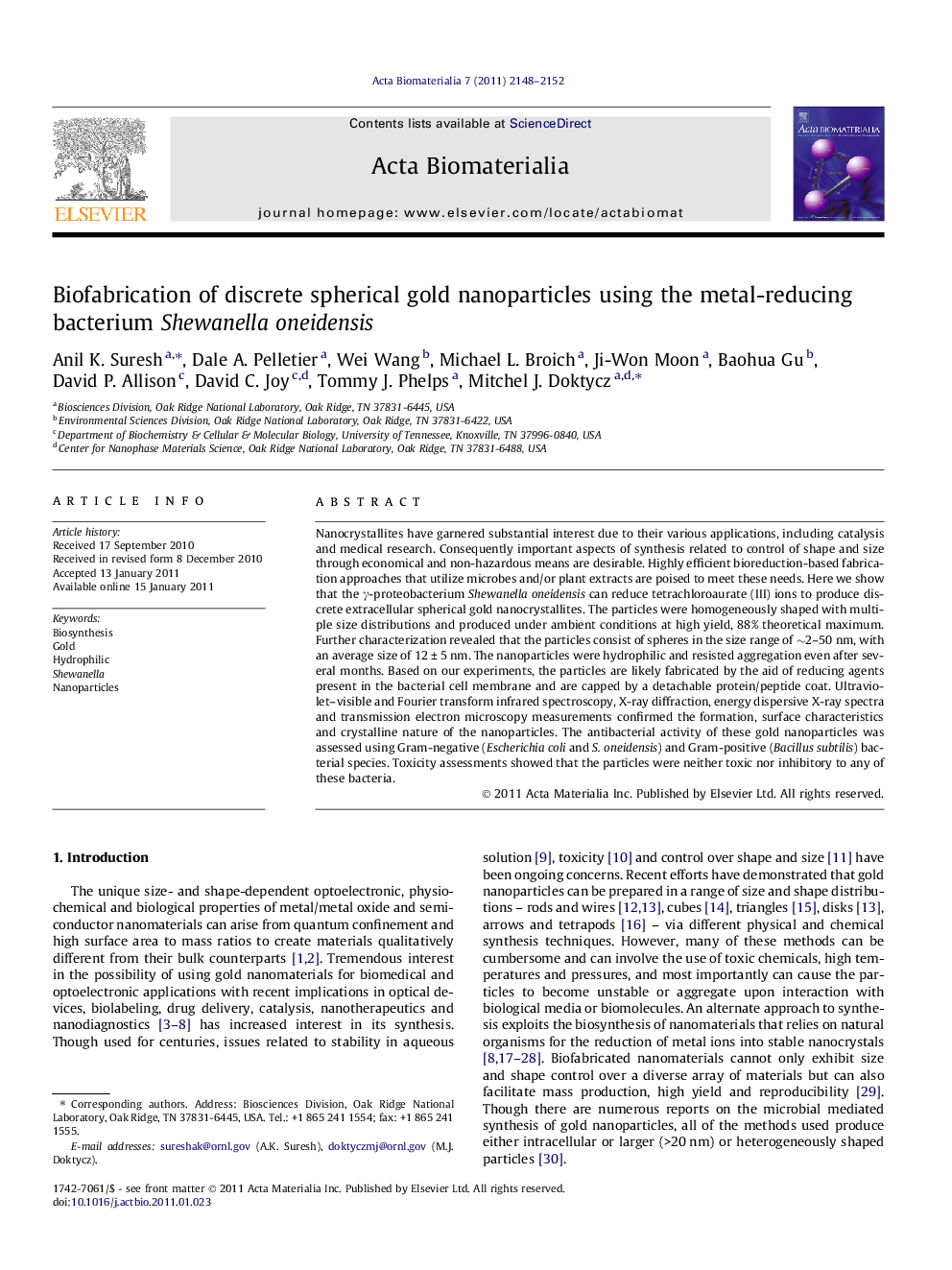| Article ID | Journal | Published Year | Pages | File Type |
|---|---|---|---|---|
| 1617 | Acta Biomaterialia | 2011 | 5 Pages |
Nanocrystallites have garnered substantial interest due to their various applications, including catalysis and medical research. Consequently important aspects of synthesis related to control of shape and size through economical and non-hazardous means are desirable. Highly efficient bioreduction-based fabrication approaches that utilize microbes and/or plant extracts are poised to meet these needs. Here we show that the γ-proteobacterium Shewanella oneidensis can reduce tetrachloroaurate (III) ions to produce discrete extracellular spherical gold nanocrystallites. The particles were homogeneously shaped with multiple size distributions and produced under ambient conditions at high yield, 88% theoretical maximum. Further characterization revealed that the particles consist of spheres in the size range of ∼2–50 nm, with an average size of 12 ± 5 nm. The nanoparticles were hydrophilic and resisted aggregation even after several months. Based on our experiments, the particles are likely fabricated by the aid of reducing agents present in the bacterial cell membrane and are capped by a detachable protein/peptide coat. Ultraviolet–visible and Fourier transform infrared spectroscopy, X-ray diffraction, energy dispersive X-ray spectra and transmission electron microscopy measurements confirmed the formation, surface characteristics and crystalline nature of the nanoparticles. The antibacterial activity of these gold nanoparticles was assessed using Gram-negative (Escherichia coli and S. oneidensis) and Gram-positive (Bacillus subtilis) bacterial species. Toxicity assessments showed that the particles were neither toxic nor inhibitory to any of these bacteria.
